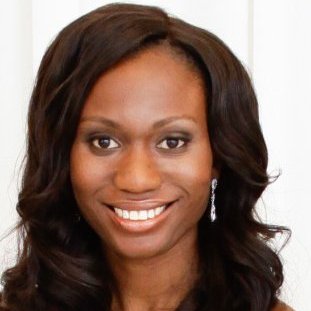Guest Post by Satta Sarmah-Hightower: Why 2016 Was My Best Income Year Ever
 Note: Today is our last installment in our guest posts from readers who wanted to share how made 2016 their highest income earning year as a freelancer. Huge thanks to Satta Sarmah-Hightower who sent me her story after reading Leslie’s and Lori’s. She is a freelance content marketing writer that has worked with many well-known brands as a writer and content marketing manager including Hewlett Packard, Accenture, Marriott, Sony, Ford and Chase. Visit her website or contact her on Twitter at @SattaSarmah.
Note: Today is our last installment in our guest posts from readers who wanted to share how made 2016 their highest income earning year as a freelancer. Huge thanks to Satta Sarmah-Hightower who sent me her story after reading Leslie’s and Lori’s. She is a freelance content marketing writer that has worked with many well-known brands as a writer and content marketing manager including Hewlett Packard, Accenture, Marriott, Sony, Ford and Chase. Visit her website or contact her on Twitter at @SattaSarmah.
By Satta Sarmah-Hightower
2016 was my highest-earning year as a freelancer. Since I took the leap from full-time employment to full-time freelancing two and a half years ago, I’ve increased my income year-over-year — 23% compared to 2015 and I now make about 50% more than I did at my last full-time job. Here’s how I did it.
I Set a Goal at the Beginning of the Year
I had an overall revenue goal this year and knew that I had to get more $1-a-word assignments or projects that earned me a rate of close to $100 an hour (though I strategically took on certain projects that expanded my portfolio). Focusing on getting more flat-fee work, rather than hourly work, boosted my income. Tracking also was critical. I maintained a Google spreadsheet with Excel formulas where I broke down the number of hours for each project, the fee and my internal hourly rate per project. This allowed me to properly price similar projects, see which projects and which clients were my biggest income generators and focus my efforts on getting more of this kind of work.
I Embraced Content Marketing
My transition to content marketing was a bit easier than other journalists because my most recent full-time role was managing native advertising projects for an online news outlet. When I first started freelancing in 2014, I did a mix of content marketing and journalism but I’ve quickly realized that the former is higher paying, faster paying and more consistent. Waiting 8 to 10 weeks to be paid for a feature article really hinders your cash flow. Content marketing is expected to be a $300 billion industry by 2019, which means that freelancers who focus on this industry could produce a sustainable income for years to come.
I Focused on Longform Content & Lucrative Niches
One of my 2016 goals was to do more white papers and other longform content (2,000 words or more). When I saw a job post on JournalismJobs.com that fit the criteria, I applied and got it. I’ve also focused more of my work on health care, technology and personal finance, three areas I really enjoy writing about but that are also higher paying. It would be nice to write only what you love, but I’m a self-employed person who lives in one of the country’s most expensive cities (Boston), so I have to focus the majority of my freelance business on lucrative niches while leaving a little bit of time for passion projects (still working on that).
I Created Processes & Systems
You can’t succeed in any business if you have weak operational processes, so I created processes for how I tackle research, communicate with clients and schedule my time. For example, I create canned Google email responses for various stages of each sponsored campaign I manage. I create a weekly schedule, allot specific time for each assignment on my Google Calendar and I outsource all my interview transcriptions. These things save me time.
I Delivered Value for Clients
My mantra is “deliver quality work on or before deadline all the time.” If a client asks for revisions, I try to turn them around in less than 48 hours. I add suggested headlines and deks to content because I know clients find this helpful and I make suggestions about how to improve certain editorial processes that may be bottlenecks. When a client recently had a 5,000-word assignment they needed done at the last minute, I said yes even though I wasn’t an expert on the topic. Hours of research and asking the right questions helped me get it done.
I Said No
I let go of work and clients that didn’t fit my strategic goals. I even turned down work from existing clients that I knew wouldn’t net me my target hourly rate, for example doing a 2,000 word assignment on a complicated topic for $600. Sometimes you have to say no to one thing to say yes to something else. That’s exactly what happened when I became more strategic about my business — nurturing relationships over several months led to new, higher paying work at just the right time.
Freelancing comes with a lot of uncertainty, but putting a strategy in place has helped me earn more money doing this than I have at any other previous salaried job. I’ve started to outline some of my 2017 goals, so I hope by this time next year I can say I’ve achieved most, if not all, of them.
Have any of Satta’s tips worked for you? Any questions for Satta? Post her and she will be happy to answer!
Worried about AI writing tools? Take control of your freelancing career. Learn how to use AI to improve your productivity. The course contains the recent info and was updated May 2023.
Register now for a 14-module self led class at the intro price of $125.

Nice article, Satta! I liked reading about how you operate. How come we (well, I) don’t know you? Are you at Freelance Success?
Hi Leslie. No, I’m not a member of Freelance Success. I’m a member of ASJA and Carol Tice’s Freelance Writers Den. How is Freelance Success and has it made a significant difference for your business?
Hi Satta,
I highly recommend Freelance Success for serious freelancers. It’s at freelancesuccess.com. Yes, it’s made a very significant difference in my business. I wouldn’t be where I am now without that community of successful freelance writers.
I also belong to ASJA, and also find that worth it, but would never, ever quit Freelance Success.
Congrats on a great year, Satta! As you correctly pointed out, putting together a plan and then workin’ it hard pays off. 🙂
Wishing you another banner year in 2017!
Thanks Lori! Same to you.
Great stuff here, Satta! Your post is really helpful. I particularly like how you mentioned you created processes (I need to do this!) and that you focused more on long-form content. (That is one of my goals for 2017!) I still find white papers intimidating, but I’m going to suck it up and start going after them.
Can you explain a bit more about what you meant by “create canned Google email responses for various stages of each sponsored campaign.” Is this regarding writing projects, or a different service you provide?
(And one question for Jennifer: Hey there! Do you know how I can get my face to appear next to my comments on here? I feel so…er, blank whenever I comment. Heh, heh.)
Thanks Holly. Here’s an article that explains how to create canned responses in Gmail: https://blog.hubspot.com/sales/gmail-templates-canned-responses#sm.0016z8rwn1ajncnqviq2ho5egk656. I use canned responses for an ongoing client project I work on. For sponsored content, I work with different advertisers to produce articles, but the process is always the same — setting up the kickoff client call (canned response for this), assigning the article to a writer (another canned response), emailing a final draft of the article to the client for review (another canned response), etc. Even if you don’t do sponsored content, you could set up canned response for your client intake/onboarding process or another project you work on where you repeat the same step-by-step tasks. Hope this helps.